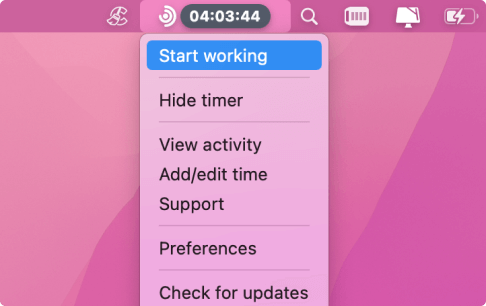The decision to build your own in-house help desk team seems reasonable—customer support remains under your control. Yet, once you start hiring, onboarding, and training your support staff, you see how much time and energy this process takes. Not to mention the time lost when you have to adjust the team’s size because of demand spikes. All of this robs you of the time and mental bandwidth needed to focus on your core team priorities.
In this article, we’ll explore the hidden productivity costs you can face when managing an internal help desk and discuss potential solutions.
Assessing the Productivity of In-House Help Desk Management
First, to understand if you’re losing your valuable time and effort, let’s see how you can measure your help desk productivity:
- Ticket resolution time: Measure how much time your support agents usually need to solve a customer issue. The result will indicate if your support process works smoothly or if you need improvements.
- Agent utilization rate: Track the time your agents spend on actual support tasks versus idle time and administrative work.
- Managerial hours spent per week: To understand your own workload better, monitor the hours you spend managing support operations (e.g., scheduling, meetings, escalations).
- Training time per agent: Monitor the total hours you and your team spend onboarding and training new support agents.
- Escalation frequency: When support agents can’t resolve an issue on their own, it may indicate poor processes, insufficient training, or a lack of understanding of the broader customer journey. Each escalation can significantly increase your management workload.
By tracking these metrics, you’ll gain insight into how efficiently your help desk operates, and how much time and effort you’re investing in keeping it that way.
Now, let’s examine the day-to-day responsibilities that, while necessary, may be taking time away from higher-level priorities.
Routine Administrative Tasks
As a support manager, you know that routine tasks like shift scheduling, performance tracking, and ticket queue monitoring are essential to smooth operations. But when these responsibilities consume most of your time, they leave little room for strategic work like optimizing workflows, mentoring your team, or driving performance improvements.
Here are a few examples of time-consuming but necessary activities:
- Scheduling support shifts: You spend time coordinating and assigning daily shifts, so that your help desk is never understaffed.
- Creating performance reports: You collect data to monitor your team’s performance and service levels.
- Managing internal communications: You handle the information exchange between your help desk and other departments to keep everyone aligned on support priorities.
- Tracking ticket queues: You constantly monitor incoming support tickets, so that none are overlooked.
Communication Overhead and Escalation Complexities
In-house help desk management also involves facing complicated communication and escalation processes. According to a 2024 report by Fullview, the average First Contact Resolution (FCR) rate across various industries is approximately 70%. This indicates that about 30% of support requests require multiple follow-ups or escalations to achieve resolution. That translates into a lot of time spent coordinating between departments and fixing communication issues. Each escalation needs your involvement: you need to manage disputes, set expectations, or simply ensure that no ticket falls through the cracks.
Addressing Turnover and Wasted Talent
The most overlooked drawback of in-house help desk management is that your talented support agents aren’t using their full potential. If they spend too much time on simple, repetitive tasks, their real skills go to waste. Instead of solving complex issues or improving processes, they’re stuck answering the same common requests.
On top of that, when someone leaves the team, you have to spend time and money recruiting, hiring, and training a new support member. Each new employee can cost you around $1,250 to train, not to mention the hours you spend doing it. All of this adds up, distracting you from leading your team effectively. Your focus becomes divided between solving daily problems and working on big-picture goals.
Reclaiming Time: Smarter Ways to Manage Your Help Desk
The activities we discussed are part of your job, but they quietly drain your time and focus. Instead of driving improvements or planning ahead, you find yourself stuck putting out fires. Now, when you recognize these hidden costs, you can decide if your current setup still works for your team, or if it’s time to explore smarter alternatives.
Before making structural changes, consider streamlining how your support operations run. There’s no one-size-fits-all solution, but here are a few targeted ways to reclaim your and your team’s time:
Automate Repetitive Tasks
Most internal help desks squander valuable hours responding to the same types of questions. With AI chatbots or self-service knowledge bases, you can reduce ticket volume and reserve more complex work for agents. Zendesk or Freshdesk, for example, offer automations for ticket routing, tagging, and even first-response messaging.
Here are the steps to make the most of automation:
- Analyze your ticket data to find the most common questions that AI can handle without agents.
- Build a clear, easy-to-navigate self-service knowledge base and keep it updated.
- Train your AI chatbot using real customer interactions.
- Set up automation rules to route complex or urgent tickets straight to senior agents.
- Regularly review and adjust these workflows to keep them effective as your support needs change.
Improve Internal Workflows
Sometimes inefficiencies are rooted in poor processes rather than your team. To reduce delays, take another look at your escalation procedures, optimize shift scheduling, and align Service Level Agreements (SLAs) with actual capabilities. In addition, analyzing agent activity levels will help you uncover inefficiencies before you scale or restructure.
Outsource Select Functions
For situations where your internal staff is overworked or lacks the appropriate skills, it is best to employ help desk outsourcing services. A dedicated support partner can offer 24/7 availability, deliver multi-language support, and provide skilled agents. And the best part? It won’t add to your management workload. Outsourcing works best when it’s integrated strategically with your existing operations, not used as a one-size-fits-all replacement.
Use Time-Tracking Insights to Redesign Workloads
Time-tracking tools like Traqq reveal exactly how your team spends their hours and where time is slipping away. When using a time tracker, you can separate direct support from admin work and identify what to delegate, automate, or simplify. This makes it easier to rebalance workloads, adjust team size, and reduce time wasted on low-priority tasks.
As a manager, you can track your own time spent on scheduling, meetings, and coordination. This way, you’ll gain better clarity on your workload.
For teams working with outsourced support, Traqq is a great tool to monitor billable hours, keeping partnerships transparent and accountable.
Build a Scalable Onboarding Process
New support employees have a lot to learn in a short time. A standardized onboarding process that includes role-specific training, clear documentation, and mentorship can help them reach full productivity faster. This also eases the burden on experienced agents: they won’t have to spend as much time answering basic questions or training new hires on the fly. To truly assess the effectiveness of these scalable processes and the productivity gains they offer, it’s crucial to track comprehensive onboarding metrics.
Consolidate Support Tools and Systems
Jumping between email, ticketing tools, chat apps, and scattered documents slows your team down. You can unify these tools into a single support platform. Centralize communication, ticket handling, and knowledge sharing. It will reduce context switching and make cross-team collaboration smoother.
Making the Strategic Choice for Your Organization
If you’re managing an in-house help desk, you know that the hidden productivity costs are significant: from repeated escalations to the burden of continuous training. These challenges drain your time and distract you from the strategic work that improves your team’s performance.
Every decision about where to automate, outsource, or optimize should stem from clear data and a deep understanding of your team’s strengths and weaknesses. Choosing the right solutions for your situation turns efficiency into a strength, and not just a way to cut costs.

